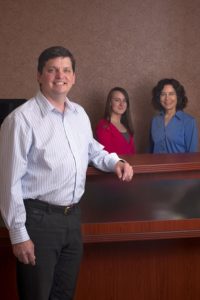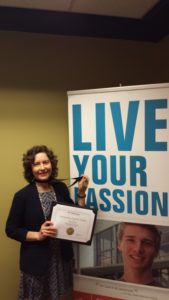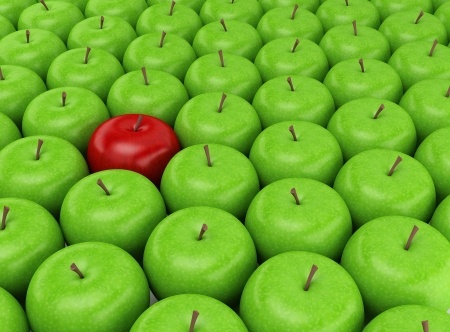If you believe your employees are your greatest asset, then the Staff Page of your website needs to reflect this belief. The Staff Page gives you a platform to showcase the people who make your business tick. Web visitors can identify who’s who by looking at the photos of key people posted on the page. These photos build an association between the individual and the brand they represent. Each photo should be accompanied by a professional biography that is written with flair. A catchy biography keeps visitors engaged and interested in learning more about you and your brand. That interest can lead to conversion in the form of sales and brand loyalty.

Professional bios are easy as 1, 2, 3
Here is the three-step process I use to write an employee bio.
- I begin with brainstorming. I make a list of things that are important, like job responsibilities, current and past employment, hobbies, accomplishments, and interesting facts.
- I narrow the list to several key ideas.
- I take these ideas and work some magic on them to transform the ordinary into something extraordinary.
Focus on a strength
Here’s an example from my own professional bio. In the brainstorming phase, I identified writing as one of my top skills. Then I came up with the following:
“Joan Koehne has been correcting people’s grammar since she was a kid. Since then, she’s turned this annoying tendency into a career…”
Recognize your hard work

I used words in a creative and effective way when I worked as a newspaper editor, and I use the same skills when writing professional bios.
In the brainstorming phase, key words should pop out to describe employment, past and present. Adding employment history reveals the scope of career experience and highlights some sought-after skills.
Here’s how I wove my work experience into my bio:
“Joan … now works as editor of a weekly community newspaper in Oconto Falls, where she’s a prolific writer and passionate photojournalist. Before covering this beat, she had a rewarding gig as a substitute teacher and religious education facilitator.”
Emphasize lifelong learning
Aside from work experience, education is another topic to incorporate into a bio. Earning a degree demonstrates knowledge and proficiency in a particular subject area, so it’s important to include college studies in a bio. Formal schooling isn’t the only path to wisdom, so expertise learned in nontraditional settings should be considered, also.
Here’s my example showing how I integrated my college degree and current studies into my bio:
“Joan is a college graduate, earning her Bachelor of Arts degree in journalism at the University of Wisconsin-Eau Claire, and recently hit the books again, this time as a social media marketing student at Northeast Wisconsin Technical College.”
 Blow your horn
Blow your horn
Do any awards or recognition appear on the brainstorming list? A professional bio allows employees to blow their own horn without sounding pompous.
After graduation, I added this line to my bio:
“A 2017 college graduate, Joan achieved highest honors and the Marketing Student of the Year award.”
What’s your happy place?
I add personality to casual professional bios by showing what brings the person happiness. Here I tell what a person is passionate about outside of work: hobbies, interests, community involvement.
This is how I concluded my bio:
“She’s crazy about her husband, her two kids (Can they really be that smart and be my children?), the Milwaukee Brewers and her Catholic faith.”
Match style with audience
I wrote the bio above while I was a marketing student at NWTC as a way to introduce myself to other students and to my instructor. My bio was written in a casual style to match my audience in a college setting. Once I graduated from NWTC and started a business, my professional bio needed updating.
Here’s another sample of my professional bio, written for the Staff Page of on the website of Packerland Websites and used as my blog signature:
“Once a mild-mannered reporter and editor, Joan Koehne has taken on the persona of her alter ego, Wonder Writer, and is saving the world one word at a time. In 2017 she went up, up and away to launch a writing services business, Writer to the Rescue, a division of Packerland Websites. A 2017 college graduate, Joan achieved highest honors and the Marketing Student of the Year award.”
The professional bio I send to news outlets to accompany news releases is short and formal:
“Joan Koehne is a former newspaper editor who co-owns Writer to the Rescue, a Green Bay-area writing services company that specializes in website content, blog articles and news releases. To learn more, visit WriterToTheRescue.com.”
Let’s get started
Writing professional bios is one of the services I offer clients of Writer to the Rescue, a division of Packerland Websites. Employees need professional bios that “sell” them to their audience. I can help make that happen. Contact me today to get started on a professional bio for yourself and your key employees.

 As a writer of
As a writer of 


